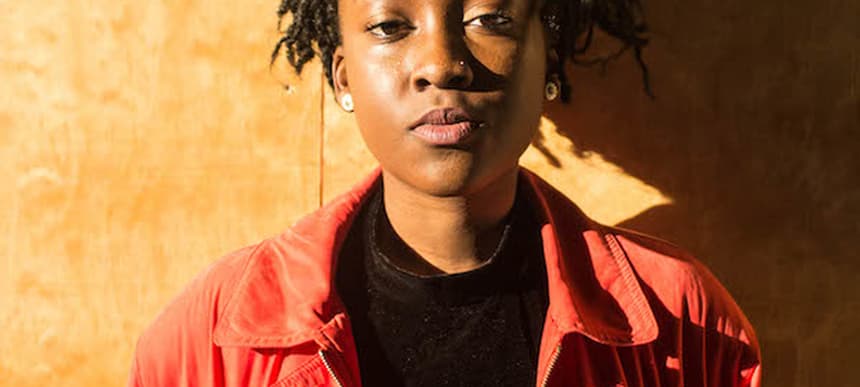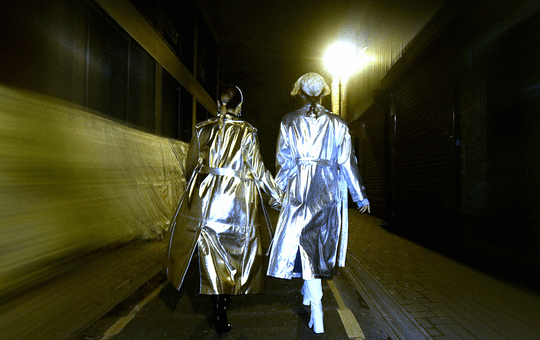
Antonia Odunlami, gal-dem, and the changing media landscape
With the ways in which we consume music and content in constant flux in recent years, by way of streaming, social media and other mediums, the media landscape is ever-shifting. Music’s relationship with written, broadcast and digital media has long driven enormous cultural change. More perspectives factor into the equation now, leaving a busy, reshaped field for both fans and artists.
As a beneficiary of the changing media landscape, print and online magazine, gal-dem, has gone from strength to strength, constructing an open space for women of colour to share thoughts and ideas, channelling that energy into thoughtful discourses on race, culture, politics and beyond. It is a uniqueness and authenticity that has led the publication to universal acclaim, as more and more get woke on its growing impact. We caught up with gal-dem’s music editor, Antonia Odunlami, at Boiler Room and Ballantine’s True Music Forum in Warsaw, Poland – a space wherein she took part in a discussion with other writers about the future of new media – to talk about the magazine’s rise and the emergence of DIY culture as a whole.
What do you think have been some of the most important changes in the relationship between music and media in the last few years?
There’s definitely been a shift towards DIY culture, people are starting to realise that there’s no need for labels or major deals, and people are just releasing music and visuals by themselves. Everything is being documented now, through coverage, magazines, Instagram pages, and people are getting really creative, because there are no bounds to what you can do. People are writing their own rules, basically.
What do you think sparked the change?
I think it was just a lack of diversity. The internet has a big part to play as well because, back in the day, There weren’t independent magazines around that had the same reach as gal-dem do now, where you can have an idea, decide its going to be a thing and going along with it one day at a time and learning as opposed to working for The Guardian, training up, being there for 20 years etc. People are just doing whatever they want now, and I think it’s really cool.
Do you think the internet and the rise of this DIY culture go hand in hand?
Definitely. This may sound weird but recently my friend who’s a video editor uploaded her CV to Twitter and put one line saying what she did at each place and the logo of each place, and it got hundreds of retweets. Back in the day, you wouldn’t think to do something like that, you would just be typing up the same one your teacher gave you in sixth form!
But is the rise in DIY culture to the detriment of the industry? Because, now, artists and creatives won’t be looking to labels to their work…
It must be a scary thing for labels and A&Rs but at the same time it means they have to find ways to be creative as well and be savvier in how they approach an artist, why they want to and what they can offer. Labels like XL and Brownswood are really good at letting an artist create what they want to, whereas the more commercial ones are more rigid and focused on making money rather than showing care for the actual artist.
You write for gal-dem, a predominantly online magazine, and print is obviously still a big fixture in the media landscape. But, with digital media now a permanent fixture, does it have a shelf life?
It depends on your approach. With gal-dem, we do one run of each print issue and once it’s done, it’s done. We did one last year for the one-year anniversary and we’ve just done one for our two-year anniversary; we’re not going to put the pressure on ourselves to do one issue quarterly or every other month. But it’s a bit like vinyls and cassettes and how they’re coming back, and people like the novelty of having something to hold. But there are a lot of things to hold so you have to decide. Music is very cyclical, and everything has its run before coming back full circle.
What recent examples have you seen of music being able to enact cultural change?
Definitely in the recent UK general election, and I’m yet to find who is behind this Grime4Corbyn thing [laughs]. But just that whole wave; there hasn’t been a recent politician who has been able to mobilise young people like Jeremy Corbyn, to get us to give a shit about politics. I think we’re quite frustrated by everything that’s going on and, on the whole, a lot of us tend to disengage because none of the politicians are speaking to us. I don’t know how he’s done it but [Corbyn] has managed to get the attention of people like Jme and have a conversation and talk to us in a language that we can understand. Music definitely has a big part to play in it; grime is very political in and of itself and it was smart for Grime4Corbyn to target young people, round up the artists we listen to, show us what they’re saying, and be that middleman to translate. It’s really powerful because music is so embedded in the UK, so there’s no way it couldn’t be political. We could disengage for the next 100 years but there had to be someone who connected to young people and got us to rally behind him.
What further changes do you see taking place in music media in the next few years?
I see a lot of artists just working with teams of their friends and working on projects that become their lives. Carving their own spaces and waiting on someone to do it for them. More independence.

Tell me about the process behind making such an expansive magazine like gal-dem.
It started with a few editors and our friends, some of us had experience writing and some didn’t, and everyone just pitched their strengths to the body of work and we took it from there. We started with the illustrators and they a lot of our content online because we didn’t want to pay for press shots, and we started building up our writing and editing experience. A lot of us were doing internships and work placements at small magazines and getting bits of advice that we would then use to turn into our own. The main reason why it grew so quickly, I think, is because of the university networks we had when it first started. I would go to Manchester and a friend would say they’ve heard of gal-dem and they want to get involved. Then it just snowballed, which meant we had to keep up the pace a little bit and get clued up on laws so we didn’t get in trouble [laughs]. Obviously, Liv [Little] is the editor-in-chief and has that creative control over everything, but we just all do it in our bedrooms in our spare time, trying to get by and get funding now.
Did you expect gal-dem to be so universally received so quickly?
No. I didn’t know what to expect, I just knew I wanted to get involved in something that was changing how people of colour were seen to people. Like, why is someone who doesn’t know what a reload is, being asked to review a Skepta gig? Why am I pitching to a magazine and they turn it into a thing about race that I didn’t pitch in the first place? It was just frustration and looking at how we could change it for ourselves.
Where do you think gal-dem fits in the current media landscape?
I think there are a lot of collectives trying to make women and people of colour more visible but, I guess because we’ve gained so much traction, it means we’re getting more attention. I think we’re getting more and more legit with it, but I still feel there are people who look at us as little girls running around and dragging Miley Cyrus and Justin Bieber [laughs].
What does the future hold for gal-dem?
More growth, and hopefully this will become our main hustles. We’ve got an office now and we’re hoping to bring in more funding and getting more legit, every day.
gal-dem's second print issue is out now. Check out the Boiler Room and Ballantine's True Music Forum – The Music Media Landscape – including Antonia, below.













